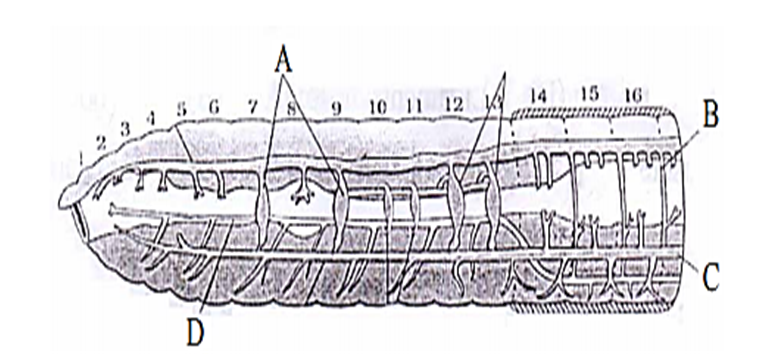 Multiple Choice Questions
Multiple Choice QuestionsIn cockroach, the arthrodial membrane
forms the hind wings
covers the compound eyes
forms the hypopharynx
forms the tegmina
forms the tegmina
Choose the wrong statement regarding the circulatory system of frog
Sinus venosus receives blood through major veins called vena cava
The ventricle opens into a sac like conus arteriosus
The erythrocytes are nucleated
Special venous connection between liver and intestine called renal portal system is present
Special venous connection between liver and intestine called renal portal system is present
Read the following statements and choose the correct answer.
i. Gap junctions cement adjacent cells together
ii. Areolar tissue contains fibroblasts, macrophages and mast cells
iii. Tight junctions facilitate the cells to communicate with each other
iv. Adhering junctions help to stop substances from leaking across tissues
v. Cells of connective tissue except blood secrete fibres of structural proteins called elastin
i, ii and iii only are wrong
i, iii and iv only are wrong
iii and v only are wrong
i, ii and v only are wrong
i, ii and v only are wrong
Tendons, which attach one bone to another bone are made up of
Dense regular connective tissue
Dense irregular connective tissue
Areolar tissue
Adipose tissue
Adipose tissue
In the circulatory system of Pheretima, A, B, C and D represents

A - Lateral hearts; B - Sub neural vessel; C - Commissural vessel; D - Lateral oesophageal vessel
A - Lateral hearts; B - Lateral oesophageal vessel; C - Sub- neural vessel; D - Commissural vessel
A - Lateral hearts; B - Commissural vessel; C - Sub- neural vessel; D - Lateral oesophageal vessel
A - Commissural vessels; B - Lateral hearts; C - Lateral oesophageal vessel; D - Sub- neural vessel
A - Commissural vessels; B - Lateral hearts; C - Lateral oesophageal vessel; D - Sub- neural vessel
The structure in earthworm which serves as a wedge to force open cracks in the soil is
Peristomium
Setae
Clitellum
Typhlosole
Typhlosole
Which among these is not involved in excretion in cockroaches?
Malphigian tubules
Nephrocytes
Urecose glands
Maxillary palps
Maxillary palps
Frogs
are uricotelic
have olfactory lobes in the midbrain
do not have renal portal system
have lymphatic system
have lymphatic system
Which one is a specialized connective tissue among these?
Adipose tissue
Bone
Areolar tissue
Fibroblasts
Fibroblasts
Role of calciferous glands in the stomach of earthworm is to
Neutralize the humic acid in the humus
Produce HCI
Emulsify fats
Increase the absorptive area
Increase the absorptive area
